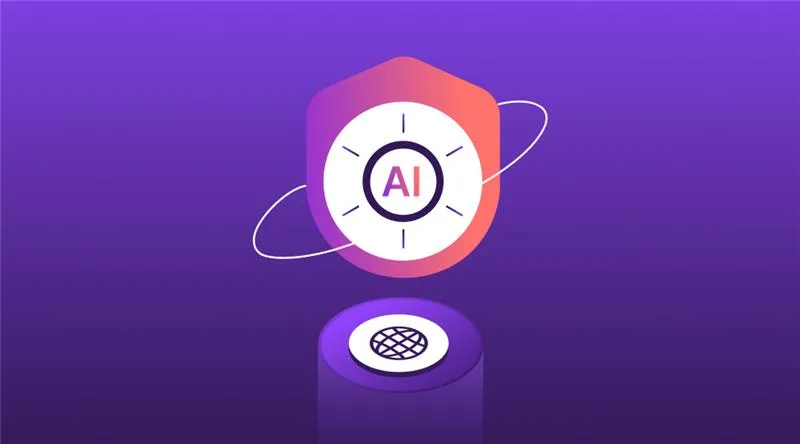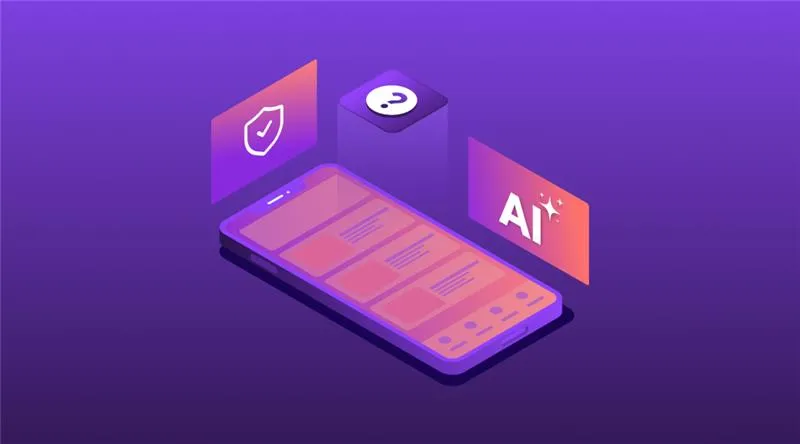Technology

5 min

React Native is a powerful open-source framework that enables developers to build cross-platform mobile applications for iOS and Android using a single JavaScript code base. However, developers often get stuck midway due to technical hurdles like rendering, memory leaks, navigational problems, etc. Learn the key strategies for building successful React Native cross-platform apps in our detailed guide.

By Ayushi Shrivastava
08 May, 2024
React Native is an efficient, consistent, and reliable framework that fits JS's essence. It resembles native-like features and design aesthetics. The accessibility of reusable components, UI-focused approach, live reload, and robust rendering made it a favorite choice of the developer community. Skype, Meta, Instagram, Walmart, and other top giants have accessed this framework.
Businesses and developers both prefer React Native app development to launch multiplatform apps. Developing an app is a daunting and time-consuming task. They must launch apps that resonate with their budget, market needs, and business vision. While juggling daily scrums, client meetups, and coding tasks, they may need to catch up somewhere. It happens to everyone, whether experienced or newbies, in the developing world. Here in this blog, we cover common mistakes and recommend tips and strategies to fix things efficiently.
 Whether programming or any other task, it is better to be familiar with the basics before going to the advanced level. Insufficient knowledge delayed the process. If you are proficient in HTML, CSS, and JS, then it's convenient to build projects with React Native. Generally, newbie developers are stuck with the following obstacles if they don’t know the basics. While building a cross-platform app with React Native, keep the following in mind:
Whether programming or any other task, it is better to be familiar with the basics before going to the advanced level. Insufficient knowledge delayed the process. If you are proficient in HTML, CSS, and JS, then it's convenient to build projects with React Native. Generally, newbie developers are stuck with the following obstacles if they don’t know the basics. While building a cross-platform app with React Native, keep the following in mind:
Understanding ComponentLifeCycle:
React Native is developed with a component-based architecture. Each component has a lifecycle, as per the cases of initiation, destruction, and update. A developer should understand the component life cycle to optimize the app and its states.
Understanding of the Component Layouts:
Using components of inconsistent size can cause performance issues and impact the loading speed. A developer should be familiar with the correct layout for different devices.
React Vs React Native:
React and React Native aren’t the same thing. The developer community has been discussing this, creating confusion since the release. Thus, developers should clearly understand how these components and APIs are distinct.
Below, we mention frequently arising problems and the strategies the development team prefers to build successful apps at Quokka Labs.
Hire dedicated React Native developers proficient in discovering bottlenecks and efficiently addressing the scenarios!
What if users need help onboarding correctly or exploring all the app's features? This will impact the app's overall PC performance, download counts, and user experience. It happens because we must understand how users interact with the app. Potential issues will be encountered if you don't pay attention to Navigation structure, patterns, library, or mechanism.
Adopt consistent navigation practices to avoid any problematic scenario. Take a deliberate and thoughtful approach, understand design principles, and align user behaviors and interactions with user needs. Keep everything simple, straightforward, and intuitive to improve performance.
Differentiate primary and secondary navigation icons in the tab bar. Pick the proper structure to display items and labels to make the search easier. By navigation, you can reduce the chances of inconsistency, slow rendering, complex discovery processes, memory leaks, etc.
If you are developing iOS apps, then implement iOS navigation, and if you are creating small apps, use the navigator function.
Furthermore, you can use the navigation experiment for complex apps. Moreover, React Navigation is versatile and lightweight and can be used across all apps.
Prefer these React Native app Development Strategies to make navigation more user-friendly.
Scroll View does not fit with every application. If the app contains a complex array of items, rendering all items in a single go is difficult. It impacts speed performance, demolishing the user experience.it is essential to redefine the list view with the best-fitted option.
Nowadays, developers prefer to display list items as flat views. Even if the previous app version UIs are designed with scrolling accessibility that is redesigned. It doesn't show unnecessary stuff and saves space and data.
sectionList is also getting similar attention for its section headers and footer accessibility. Optimizing list usability and performance is perfect if the app has nested lists. It has many built-in features to manage events and data, boosting the app experience and performance.
We're not saying the scroll view list is outdated or ineffective; however, it's the best pick for React Native app development strategies for limited list items.
When you have a massive and complex inventory, it's recommended that you use the flat list or sectionList view. It makes searching, navigating, and interacting with the list items easier.
Implement a react.memo to restrict these scenarios. Avoid practicing with the inline style, as it is unsuitable for large apps; it makes the rendering complex and requires re-rendering items that encounter confusion states.
None would like to use the app, which takes longer to load or render the features. Inaccurate image file type sizes may need more time to load, making the app slower. It can increase bounce rate and lower download counts.
You can compress the image size and transform the formats per the app's requirements. Many tools are available to optimize images and make the right fit.
Discover image reducers and caching tools to improve loading speed, rendering, and app performance. In React Native app development projects, developers choose react-native-fast-image, react-native-image-resizer, and other tools.
Dependencies and libraries enhance the app's functionalities. However, they overloaded the app's memory, causing slow rendering and memory leak scenarios.
Developers can prioritize the component lifecycle methods to limit the scope and automatically unmount components if they are no longer needed.
Implementing caching and an image rendering mechanism improves data fetching/ retrieval operations, reducing latency, inaccuracies, and repetitive HTTP requests.
react-native-fs, react-native-fast-image, react-native-offline, etc., are libraries here that efficiently optimize memory usage, increasing the app's usability and efficiency.
If the code is not readable, the JS bundle is overused, media files are occupying space unnecessarily, or native modules are taking space, it can impact baggage on compile-time patches.
To resolve compile-time issues, compress the JS bundle size and native modules, remove unnecessary code, and improve readability through a code-splitting mechanism.
Convert the media file to another format and reduce the size using compressor tools.
These are some of the best React Native app development strategies to speed up the app.
Infrequent HTTP requests, JS code, component rendering, and memory leaks may impact the runtime patches, reducing the app’s efficiency.
App profiling tools are recommended to configure the production requirements and discover the bottlenecks.
Practice with Chrome Devtools, React DevTools, and others to achieve efficiency. Adapt memoization(through react.memo or PureComponent) and ComponentLifecyscle techniques(componentDidMount, componetDidUpdate) to limit re-rendering or memory usage.
Also, install HermesJSEngine to optimize the JS bundles. React Native app development strategies will improve the app rendering and optimize runtime performance.
Not all mobile devices have the exact screen resolution. If the design is not optimized well, it will diminish the user experience through scrambled, inconsistent, and empty corners. Adapt React Native for mobile app development.
Adapt responsive app design to fit and appear ideally across different device screen sizes. Optimize the design look to match different resolutions and reduce the chances of sparse and gaps.
Refer to platform-specific guidelines and implement UI components to achieve a native app experience.
Developers are adopting the native navigation bar for Android and iOS-based devices, flexbox layout systems, and different list components to adjust and display the designs seamlessly.
They can prefer third-party libraries to access app UIs, navbars, and tab structures.
The network gets slower in some places, impacting the app's operations and usability. The React Native app development team's job is to discover the best practices to improve accessibility and user experience.
Implement APIs to fetch data to optimize network issues. This will compress HTTP requests and respond to user queries faster. To handle app operations over low network conditions, React Native leverages advanced techniques for caching and rendering data and images.
react-native-offline and react-native-fast-image are frequently implemented to optimize network performance.
Everything needs planning and strategy, no matter what you're up to, from initial research to ASO. However, some newbie developers need to think about the outcome of certain activities before making impromptu moves. Consequently, this is evident in poor user experience, lag, app shutdown, etc.
It often happens when new features are released, which impacts the loading and encounters bugs or logging issues. If the developers haven’t tested the features to run on devices and launched them without users' permission, users will have difficulty using the app.
Implementing Feature Flags is one of the effective React Native app development strategies. It enables accessibility to visible or hidden features in specific scenarios. Users can add toggle accessibility to launch and stop the required features. This will offer complete control over the app, delivering seamless experiences.
Developers can resolve this problem by accessing third-party libraries, configuring server-side functionality, and state management. Also, it is recommended to document information for every new release and let the users know what new is derived with the latest version and how it will transform the user experience.
All React Native app development tips and strategies mentioned here are just a brief to boost app performance and deliver the user's best experience.
Look at emerging tools and technologies that equip AI, ML, data science, and NLP to improve code reusability and debugging. Stay updated to stay ahead of the curve and be proficient in the development domain!
Note:
While developing the React Native app, configure all the essential prerequisites to optimize its performance and efficiency.
It’s been a decade since React Native app development services empowered businesses of all sizes. Twitter, Uber Eats, Airbnb, Discord, and other tech giants have blended the React Native practices to optimize their apps. It has boosted engagement and ROI with flawless rendering.
Any business that wants a mobile app can hire app development services from a reputable company. With proficiency in tools, advanced strategies, and tips, they can take businesses to new heights!
Ans: Captivating users is crucial in the fast-paced digital world. No matter how futuristic your app is, it may crash and frequently lag if it encounters flickering media, lazy loading, inconsistent interface, or taking up too much space on the phone. This reduces user interest in the app, impacting the low download count.
Ans: To achieve flawless rendering without bugs, low latency, or inaccuracy, React Native developers focus on reducing the load of HTTP requests quickly using caching mechanisms, data retrieval, and image retrieval.
Ans: Developers adopt various strategies and utilize methods like the composite lifecycle to optimize the React Native app by releasing unnecessary data, resources, dependencies, media files, JS code, and inline functions. They reduce the number of plugins and use debugging tools to discover bottlenecks.
Choosing Best Tech Stack for Web App Development: Performance, Cost, and Scalability
By Dhruv Joshi
5 min read
Top 9 Tech Stacks for Scalable Web Application Development
By Dhruv Joshi
5 min read
Generative AI Implementation Strategy: From Concept to Deployment (Step-by-Step Guide)
By Sannidhya Sharma
5 min read
How to Design a Web App: From Wireframes to Working Prototype
By Dhruv Joshi
5 min read

Technology

7 min
Generative AI is moving fast into enterprises, from banks to hospitals to government agencies. Adoption is rapid, but security planning lags. Unlike traditional systems, these models can be exploited through prompt injection, poisoned data, or manipulated to leak sensitive information. They are also misused for phishing, deepfakes, and malicious code.


Technology

7 min
AI-powered Web Application Firewalls (WAFs) go beyond static rules by using machine learning, anomaly detection, and predictive analysis to block zero-day threats, reduce false positives, and protect APIs at scale. Unlike traditional WAFs, they self-learn, adapt in real time, and cut operational costs while improving compliance and trust.


Technology

5 min
AI is redefining mobile app security by transforming how threats are detected, tested, and prevented. From continuous monitoring and fraud detection to compliance with regulations, AI ensures apps remain resilient against modern risks. This means safer apps, protected users, and stronger businesses. Investing in AI-driven security today builds trust, drives growth, and secures long-term competitive advantage.


Feeling lost!! Book a slot and get answers to all your industry-relevant doubts